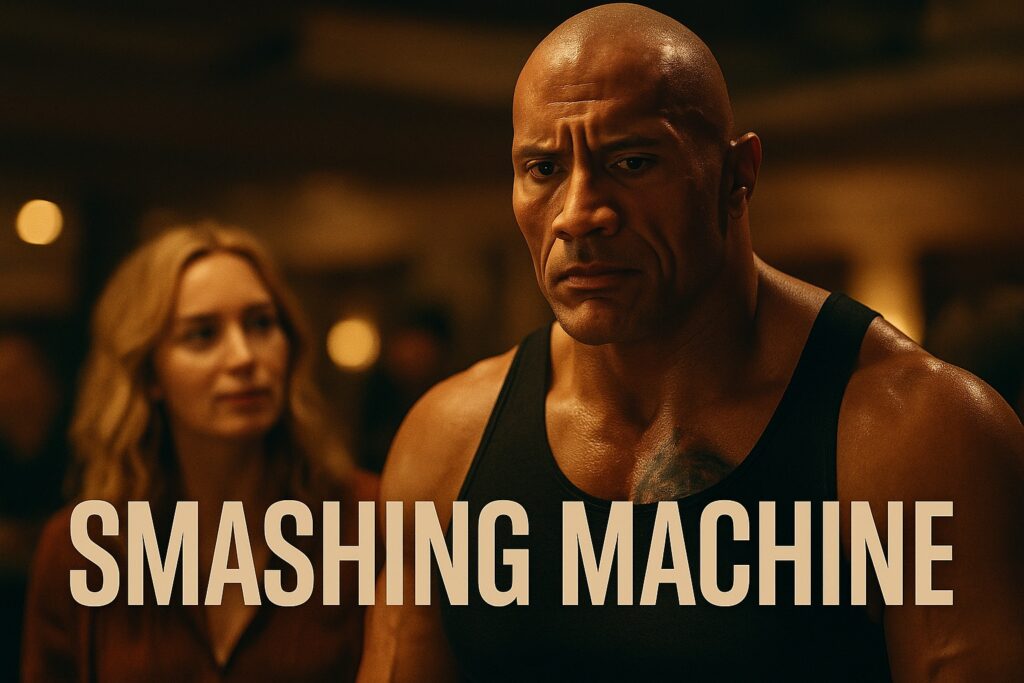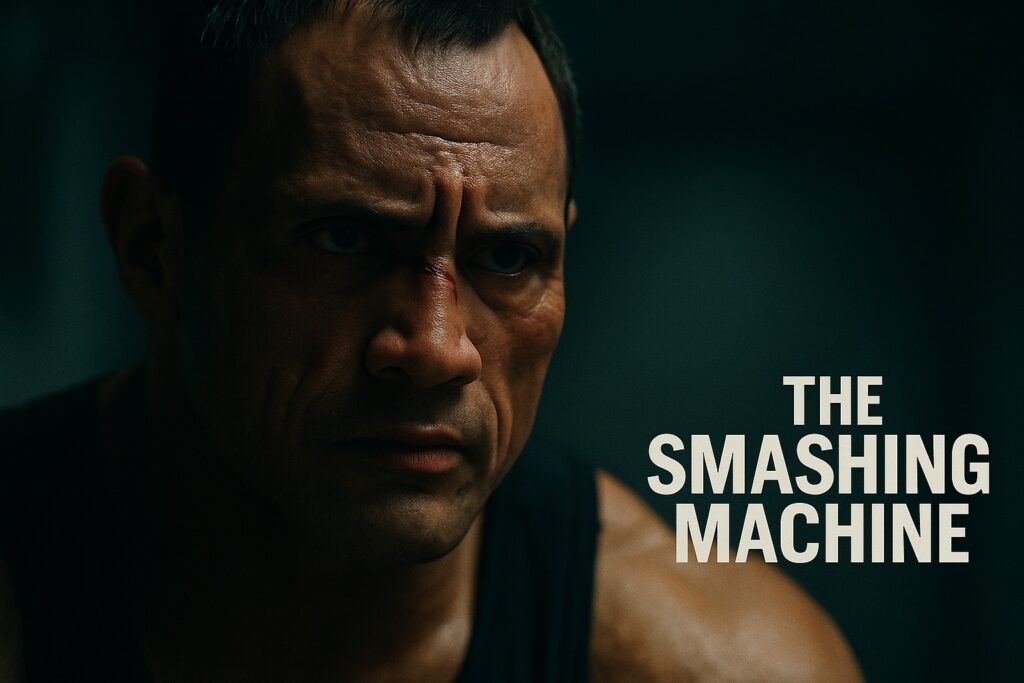
From the opening bell to the final fade-out, The Smashing Machine is a bruising, haunting journey. Directed by Benny Safdie and starring Dwayne Johnson as MMA legend Mark Kerr with Emily Blunt as his emotional compass, this A24 biopic does more than chronicle fights—it lays bare the soul of a man fighting his own inner demons.
🥊 Story & Tone
Based on the 2002 documentary The Smashing Machine: The Life and Times of Extreme Fighter Mark Kerr, the film tracks Kerr’s meteoric rise through the MMA ranks in the late 1990s, his descent into addiction, and the collateral damage borne by those closest to him. Safdie’s script doesn’t shy away from the darker corners—performance-enhancing drugs, marital tension, emotional collapse—but it also knows when to let quiet moments carry weight.
Unlike many sports biopics built around climactic matches, this film thrives in tension, in the waiting. The fights are visceral, but they’re not the only battles. The quieter breakdowns, the collisions behind closed doors, and the aching silences between bouts tell the real story.
🎭 Performances That Land
Johnson sheds his blockbuster persona with such commitment it’s frightening. The prosthetics, the gait, the physicality—they all serve character, not spectacle. Critics have praised his performance as “transformative,” and this is the kind of work that has Oscar watchers leaning in.
Emily Blunt is unexpected electricity as Dawn Staples–Kerr. She brings both tenderness and ferocity to a role that could’ve been sidelined. Their chemistry anchors the film’s emotional core. As Kerr unravels, Blunt’s restraint gives fragility to every confrontation, turning domestic scenes into psychological jousts.
Supporting roles, from Ryan Bader as Mark Coleman to Bas Rutten, help ground the MMA world in reality. The casting of Oleksandr Usyk in a pivotal fight gives the ring scenes extra gravitas.
🎬 Cinematography & Style
Shot mostly on 16mm film (with some 70mm and even VHS aesthetics), The Smashing Machine feels tactile, raw, and immediate. The camera lingers on hands, bruises, sweat, the narrowing of pupils—details that speak louder than any monologue. Rotten Tomatoes+3Wikipedia+3a24films.com+3
Color palettes move from deep blues and dim gyms to flickers of daylight in the epilogue. These visual arcs mirror Kerr’s trajectory from shadow into clarity. Where most fight movies lean big, Safdie’s direction favors a granular realism that underlines the human cost behind every knockout.
⚖️ Verdict
The Smashing Machine doesn’t always nail narrative momentum—some pacing wobbles appear in the second act and a few confrontational scenes strain plausibility. But it does something rarer: it respects its subject’s complexity. It refuses to reduce Kerr to a number or a punchline. Johnson’s daring performance, combined with emotional restraint and visual clarity, lifts this film above biopic tropes.
Score: 8 / 10
If you came to see physical battles, you’ll get them. Stay for the quiet ones—the fights we wage inside ourselves.

